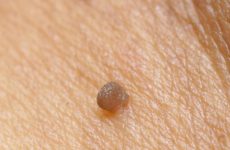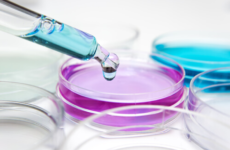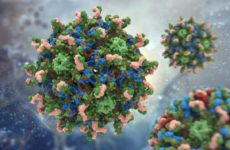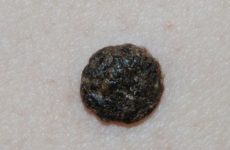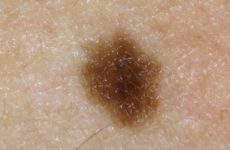To ensure the quality of life of the body, health care should be a priority. Moreover, modern science makes it possible to diagnose hidden potential dangers at an early stage.
For example, an analysis for papillomavirus allows you to identify a dangerous agent even before it begins to destroy the human body. The papillomavirus family includes about 70 strains, and each of them carries a particular danger to certain organs.
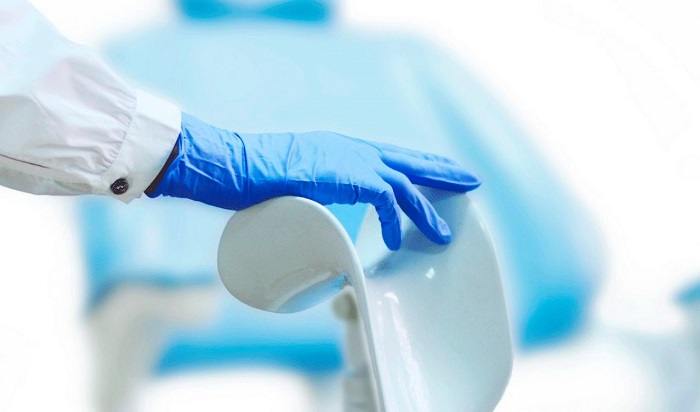
I must say that the most favorable environment for the development of this virus is the microflora of the vagina, so this infection is most often diagnosed in the fair sex.
Of course, not all strains of papillomavirus are deadly, but their oncogenicity can only be determined using laboratory tests.
Содержание:
How to determine the presence of the human papillomavirus in women
If an HPV test is prescribed to a patient in the presence of its external manifestations on the body, the purpose of the diagnosis is to determine the type of virus for
selection of the optimal treatment regimen. If there are no visual manifestations of the virus yet, the examination is carried out to detect the virus after contact with the carrier. Also, this study is necessary during pregnancy or if a woman wants to become a donor.
The strain of the virus is determined in order to understand the dangers posed by this infection.
Currently, the following methods are used, which are considered the most effective:
- blood sampling;
- urine test;
- histological examination;
- colposcopy;
- cytological method;
- Digene test.
Next, each method will be discussed in more detail.
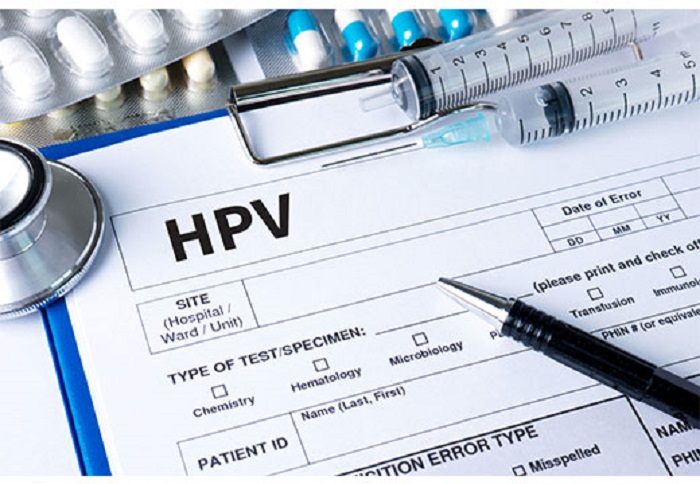
Blood sampling
Human papillomavirus can be determined by a blood test in two ways:
- PCR is a polymer chain reaction method.
- ELISA – enzyme immunoassay.
Deciphering the results of PCR allows you to assess the stage of the disease, the amount of the virus and its life cycle. In the blood, the virus reveals itself by the presence of antibodies or its own genetic code.
According to enzyme immunoassay, it is impossible to determine the degree of oncogenicity of the virus, since this study is based only on the detection of antibodies to the virus, therefore, it cannot be considered final.
Sometimes a blood test has to be taken again, because if at the time of blood sampling the virus is in the incubation period or the viral load is insignificant, there may not be antibodies to the pathogen. The test is repeated after the immune system produces antibodies.
Urinalysis
No less reliable results can be obtained from a woman’s urine test. These analyzes are also carried out by PCR and ELISA. How to properly upgrade to the collection of biological fluids will be discussed below.
Histological examination
Histological examination is the processing and analysis of tissues under a microscope, it includes 7 stages:
- fixation – the material is treated with a special substance to prevent the process of decay;
- wiring – the creation of a solid block, dehydration;
- pouring – the material under study is poured with paraffin;
- cutting to obtain thin sheets of tissue;
- staining – the material is poured with a special dye;
- conclusion – placing the material under a glass slide;
- research – the study of sections under a microscope.
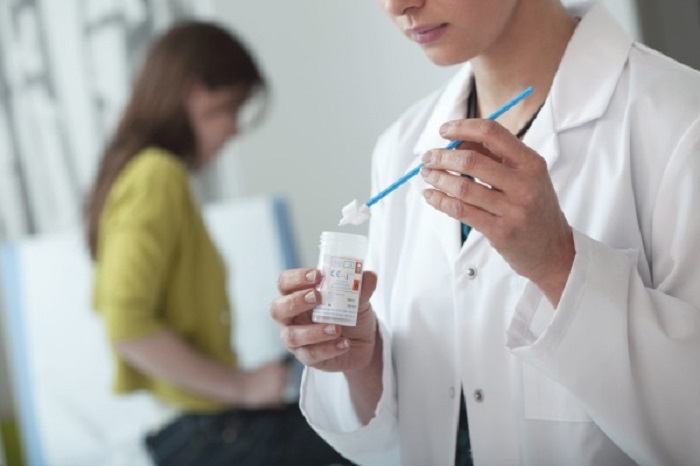
To conduct this analysis, the patient needs to get a piece of education, that is, to conduct a biopsy. Most often, a remote papilloma is welded onto the analysis.
Colposcopy
Colposcopy is the most affordable diagnostic method that is performed on women to determine the papillomavirus. The cervix is treated with Lugol’s solution or acetic acid, and the following is observed:
- the epithelium turns white;
- appears mosaic or punctate;
- an atypical area is revealed.
The modified HPV site becomes similar to semolina.
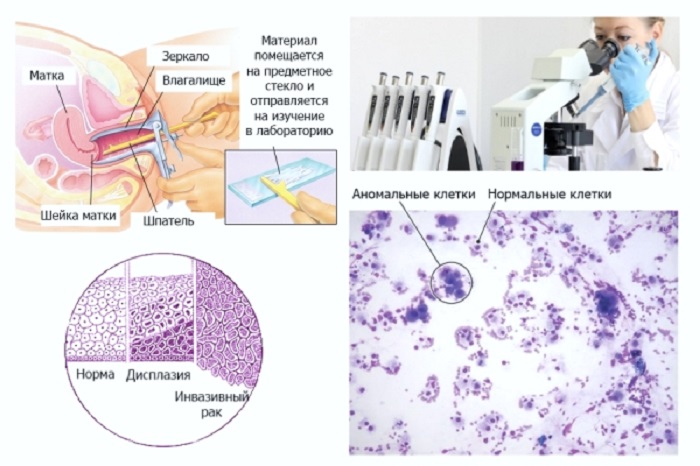
cytological method
To conduct a cytological analysis, the doctor takes a smear from the cervix with a special flat brush and applies it to a glass slide. This study allows you to determine the presence of the virus, but in this case it will not be possible to judge quantitative characteristics.
In this regard, the so-called liquid cytology is currently used, during which cells are captured from the entire surface of the cervix, as well as from the cervical canal. The resulting material is completely applied to a glass slide, and after staining it is studied by a cytologist.
A special analytical analyzer identifies suspicious and doubtful areas, which allows the doctor to pay closer attention to them. Such a study allows you to accurately analyze the cells of the cervical uterus and choose the right therapy.
Digene test
Digene test is a screening study , which also allows you to determine the presence of papillomavirus in the body even before the onset of pathological changes in the epithelium.
The benefits of this study are as follows:
- high accuracy;
- the ability to determine the presence of 18 strains of the virus, among which 13 have a high oncogenicity and 5 have an average;
- painlessness – a regular smear;
- the relative speed of obtaining results;
- the ability to determine the exact concentration of the virus in the body;
- samples can also be used for cytological examination;
- simplicity and objectivity.
The disadvantage of this study is its high cost.
Where can you get tested?
Currently, a human papillomavirus test can be taken in almost any clinic. The main thing is that it should be equipped with modern equipment.
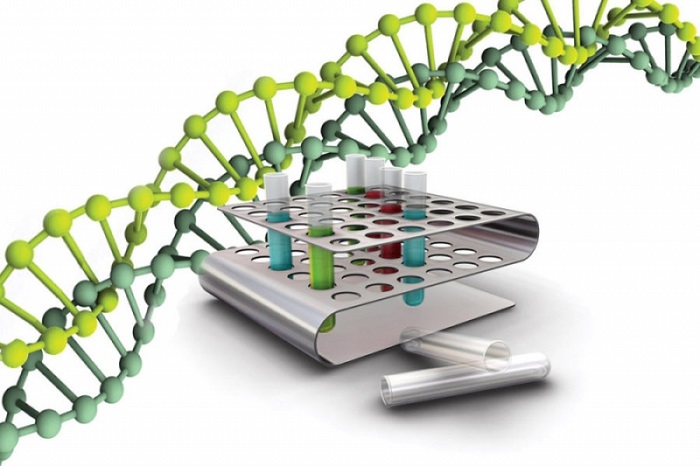
When to get tested for papillomavirus infection?
A smear for the determination of the human papillomavirus is prescribed in the following cases:
- pregnancy planning;
- frequent miscarriages and infertility;
- inflammatory processes in the genitals;
- the presence of warts and genital warts on the external genitalia;
- discharge, the cause of which cannot be established;
- having a partner with sexually transmitted infections;
- itching in the genital area;
- uncomfortable and painful urination;
- prevention.
The study can be carried out both before and after menstruation.
Pre-delivery preparation
Preparing for an HPV smear:
- For 2 days, you should exclude sexual intercourse, do not use cosmetics for intimate hygiene and do not douche.
- Before the procedure, you must take a shower without the use of hygiene products.
- If a woman is taking any medication, she must inform the doctor in advance.
- During menstruation, a smear is not taken, it is better to take this analysis in the first days after the end of menstruation.
A blood test for HPV also requires preparation. To get the most reliable result, doctors recommend:
- the day before the upcoming analysis, do not drink alcohol and do not smoke;
- ELISA is taken on an empty stomach;
- 3 days before donating blood, it is advisable to refuse intimacy;
- 2 weeks before the analysis, it is recommended to stop antiviral therapy;
- On the eve of the study, it is necessary to exclude stress factors.
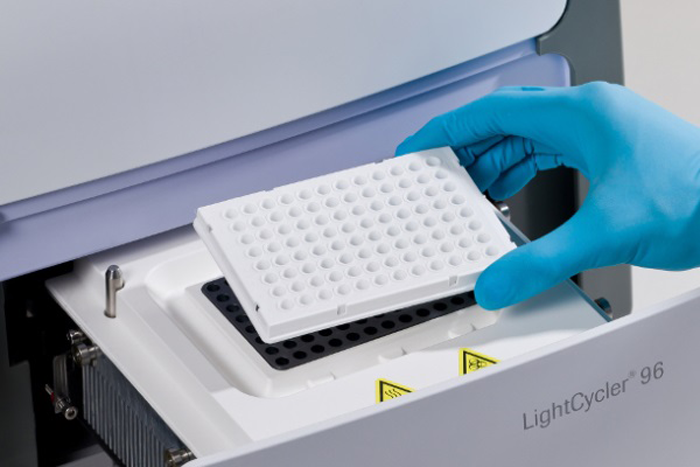
How to take
Colposcopy – this method of visual examination, the doctor examines the structure of the cervix, and assesses the condition of the tissues. During a colposcopy, tissue samples may be taken for other examinations. For cytological examination, a smear is taken from a woman, which is then examined under a microscope.
Histology is also a study under a microscope, the material for it is a piece of neoplasm tissue. It could be a papilloma removed. A blood test is taken from a vein.
To conduct a Digene test, you will need material that is obtained by one of the methods listed above. Most often, a biopsy is performed as part of a colposcopy.
For PCR analysis, different biomaterials can be used – blood, urine, amniotic fluid, a swab from the genital mucosa.
Biomaterial sampling rules
Material for research can be taken only by a doctor. In some cases, the analysis may turn out to be false positive, the reasons for this may be the following factors:
- non-compliance with training requirements;
- incorrectly taken sample;
- use of vaginal suppositories or douching (if a smear test is taken);
- taking medications;
- the virus is localized deep in the genitals.
The sampling of biomaterial is carried out with the help of a soft brush, this is an absolutely painless procedure that does not cause any discomfort to the patient. After receiving the biomaterial, the brush must be packed in a sterile tube and sent to the laboratory for analysis.
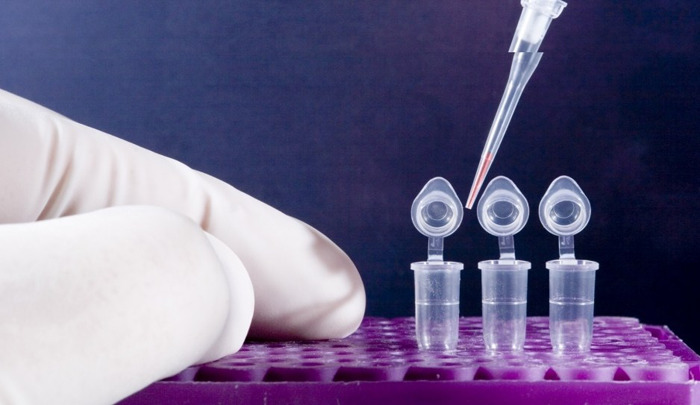
How long to wait for results
You need to wait 2 days for the result of the PCR analysis, the Digene test will be ready in 7-14 days.
The results of PCR analysis are as follows:
- PCR is negative, cytology is negative – the patient does not need special observation and should visit a gynecologist for preventive purposes once a year.
- PCR is positive, cytology is negative – it is recommended to repeat the analysis for cytology in six months.
- PCR is negative, cytology – initial signs of epithelial dysplasia – observation and repeated cytological analysis in six months is necessary.
- PCR is positive, atypical cells are found in the smear – colposcopy is recommended.
Research cost
Due to the fact that at present there are new methods of analysis for the human papillomavirus, their cost remains quite high. Of course, it depends on the research method and the medical institution where the analysis will be carried out.
The average prices are:
- colposcopy – 700-1500 rubles;
- cytological analysis – 1100–2500 rubles;
- smear sampling – 300 rubles;
- histological examination – 2000-3000 rubles;
- PCR analysis – 700-1900 rubles.
Therapy of papillomavirus infection consists in the use of special drugs, the action of which is aimed at stopping the progress of the pathology. It is impossible to completely remove the virus from the body.
If the immune system works well, then the virus is suppressed by the body on its own without additional therapy. Prevention of the disease lies in the timely vaccination.


